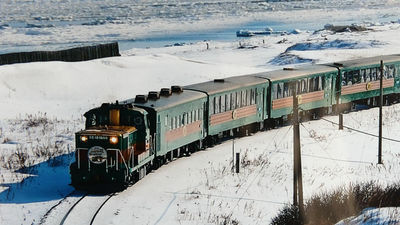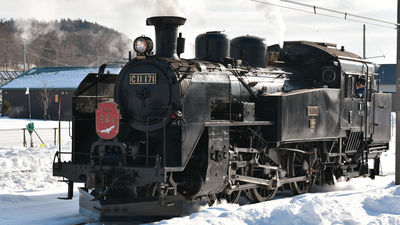'Shikoku Green Travel' - Taking full advantage of express trains and riding all of JR's Shikoku lines - Day 1

In August 2024 , it became possible to travel on all of the Nankai Electric Railway lines with a one-day pass, so I thought, 'If I can use it for four days, maybe I can ride all of JR Shikoku's lines and sections with just one 'Shikoku Green Travel' ticket?' and decided to actually try it.
Shikoku Green Travelogue | Shikoku Travel JR Shikoku Tour (Ekikomi)
https://www.jr-eki.com/ticket/brand/2-3UW
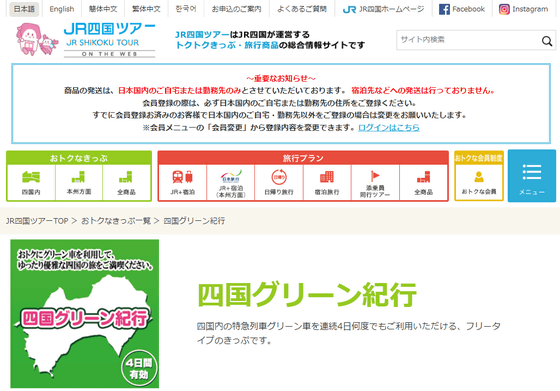
'Shikoku Green Travel' can be purchased at JR Shikoku's ticket sales site,
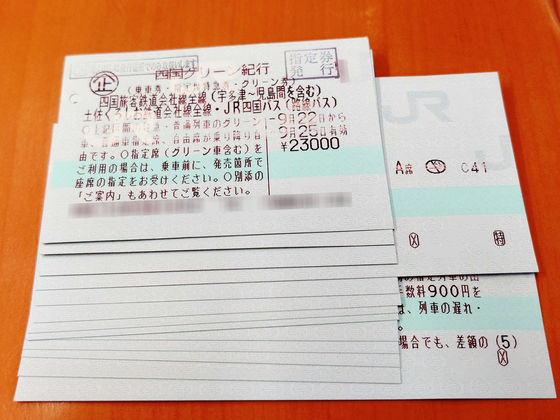
* Express Ishizuchi No. 101 Takamatsu → Matsuyama
On the first day, the journey starts from Takamatsu Station. It is light rain and just before sunrise.
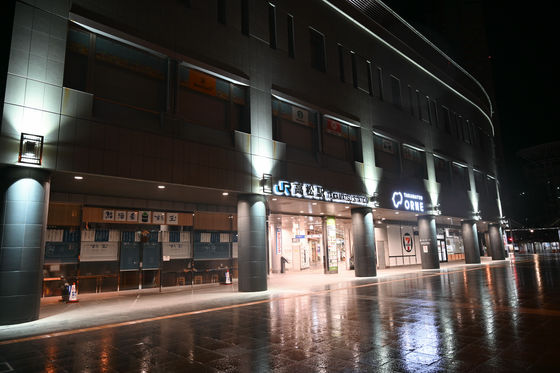
Takamatsu Station at 4:00. The first train from the station is the 4:35 bound for Okayama.
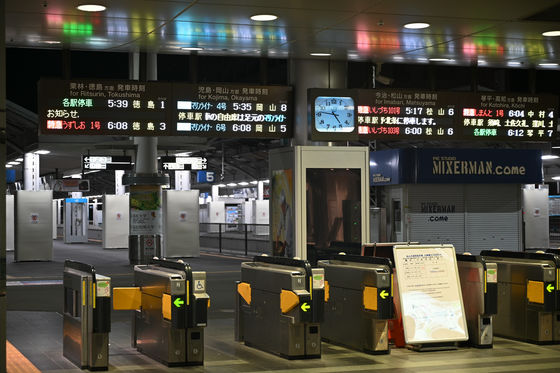
This time I will be taking the first train on the Yosan Line, the 5:17am Ishizuchi 101 Express bound for Matsuyama.
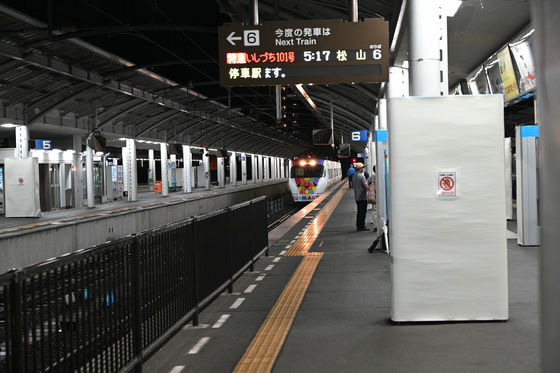
JR Shikoku is known for its Anpanman trains, which are wrapped in Anpanman designs. Ishizuchi 101 is an 8000 series Anpanman train.
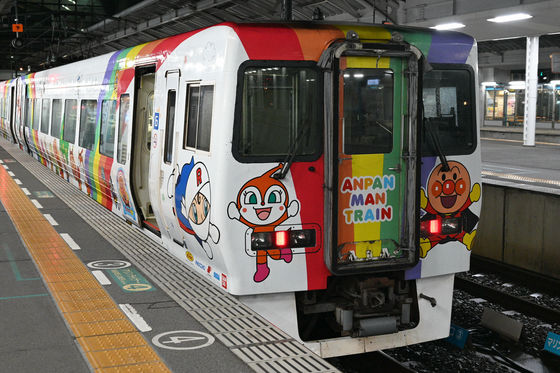
A giant Anpanman and others are depicted on the side.
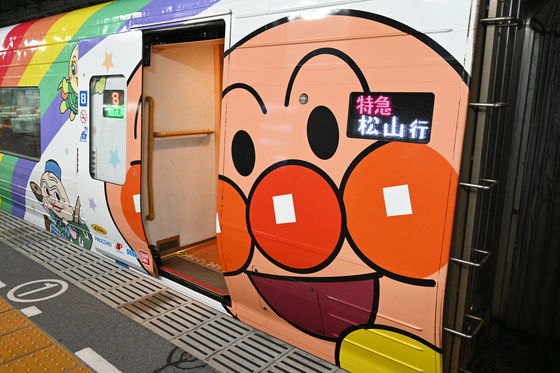
The timetable for which Anpanman trains are running is publicly available, so you can choose the train you want to ride. This time, I chose the train because of time constraints.
Anpanman Train - JR Shikoku
The express train departed Takamatsu Station at 5:17 and proceeded through the darkness, so all I could see from the window were the car headlights. It was still dark when we arrived at Sakaide at 5:30, but it started to get lighter after we left the station.
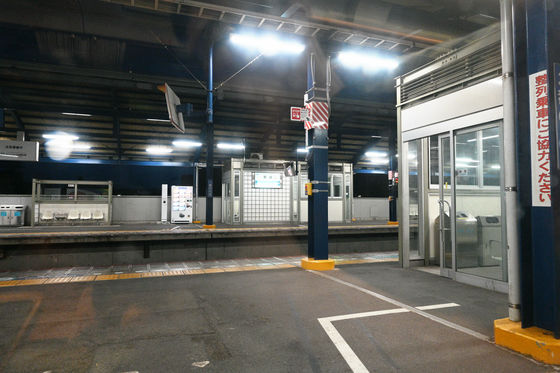
To the right of your direction, you will see the orange stretch of bridges in the distance.
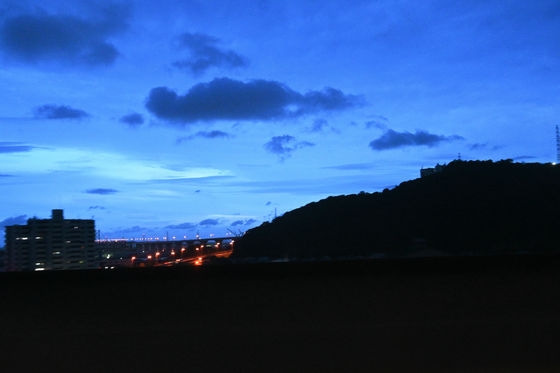
We continued on with the Seto Inland Sea on our right. Unfortunately, the clouds were quite thick that day.
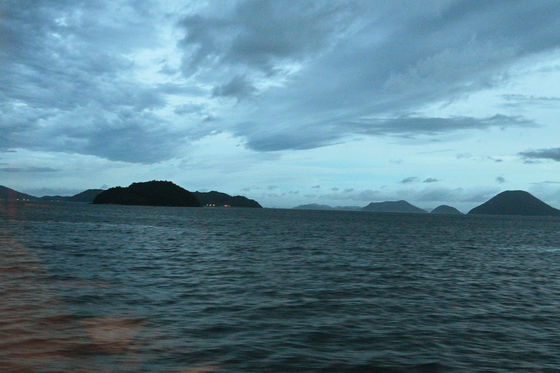
The mountain on the left hand side of the direction we were heading looked like this, and the sky showed that it was raining quite a lot.
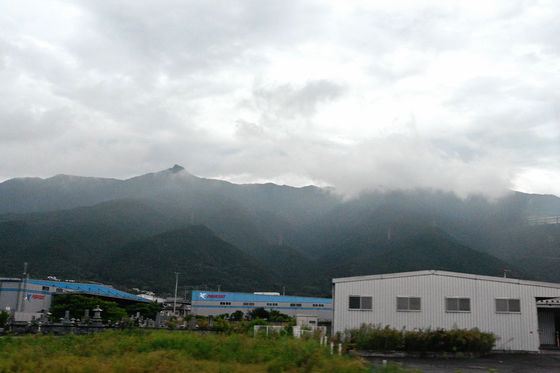
And finally, raindrops start to appear on the window.
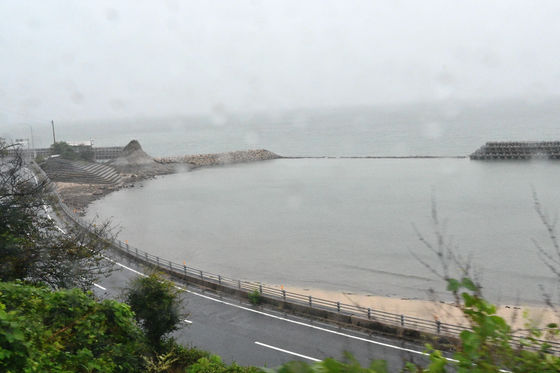
Ishizuchi 101 arrived at Matsuyama Station at 7:57. Matsuyama Station will open a new elevated station building on September 29, 2024, and this station building will be the final appearance of the previous station building.
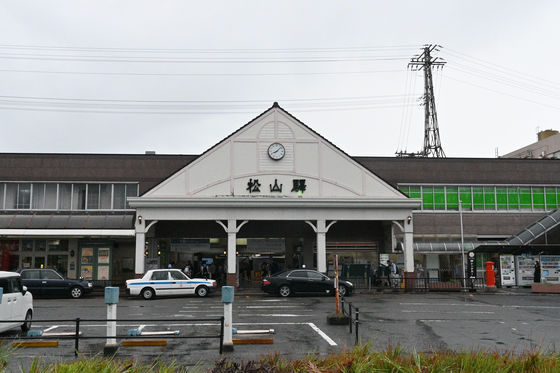
◆The Iyonada Story: Ozu Edition, Matsuyama → Iyo Ozu
The purpose of this trip is to ride all of JR Shikoku's lines and sections, so I will be riding both sections beyond Matsuyama where the Yosan Line splits into the Aiaru Iyonada Line on the sea side and the Uchiko Line on the mountain side.
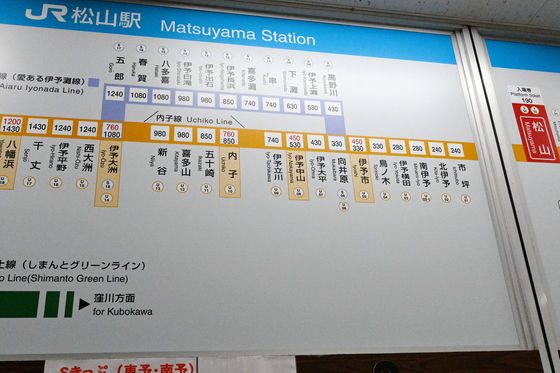
The limited express 'Uwakai' that connects Matsuyama and Uwajima goes around the Uchiko Line, so the problem was when and how to fit in a trip around the beloved Iyonada Line. There are nine round trips of local trains per day, so it's not that difficult to get on, but this time I decided to use the tourist train '
The 'Iyonada Monogatari' can be seen on the departure timetable at Matsuyama Station. The train name display color is light blue instead of the white of local trains or the red of express trains, and the destination is listed as 'Ozu Edition' instead of the station name. There are four 'Iyonada Monogatari' services: the 'Ozu Edition' from Matsuyama to Iyo-Ozu and the 'Futami Edition' from Iyo-Ozu to Matsuyama in the morning, the 'Yawatahama Edition' from Matsuyama to Yawatahama in the afternoon, and the 'Dogo Edition' from Yawatahama to Matsuyama. This time, we will be riding the 'Ozu Edition'.
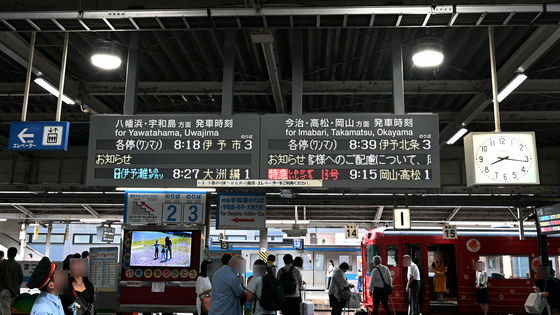
For cars 1 and 2, a regular ticket, express ticket, and green ticket are required.
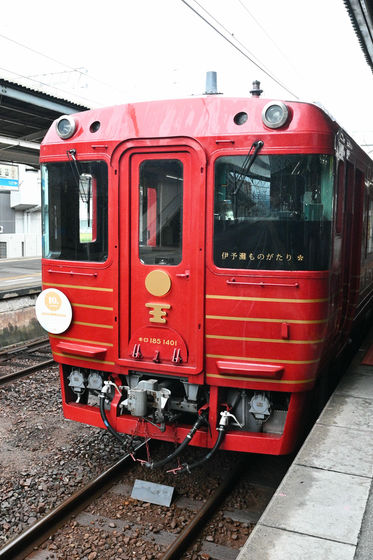
Car 3 on the Matsuyama side is a private car that can accommodate two or more people, and requires a private green ticket instead of a green ticket.
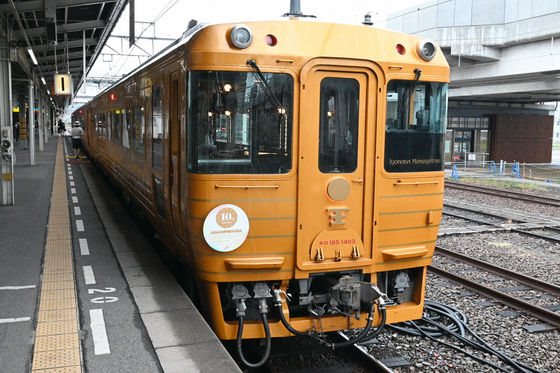
The seating on the mountain side is divided into two and four-seater table seats like this.
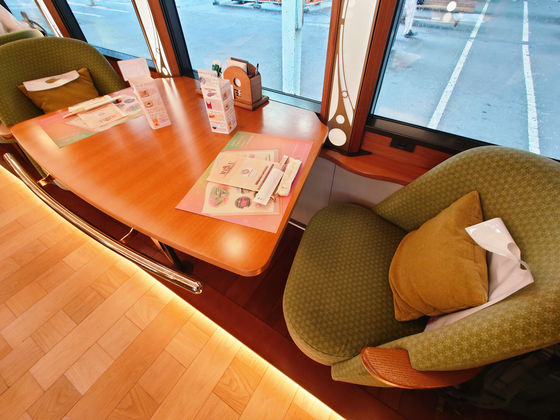
On the ocean side, there were chairs and desks facing the windows, and there was even a seat for Ehime Prefecture's image promotion mascot, '
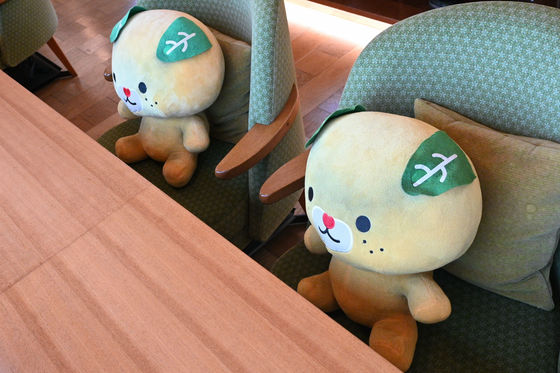
If you make a reservation in advance, you will be served meals made with local ingredients, but there are other menus available, so it's okay if you don't make a reservation in advance. However, bringing in anything other than water and tea is prohibited, so for example, you cannot buy an ekiben at Matsuyama Station and eat it on the train. This time, I was satisfied with just getting the ticket, and forgot that I should have purchased a meal reservation ticket separately by the deadline, so I did not get to eat the Ozu edition's 'Shunsai Morning Savor Your Morning Moments' by '
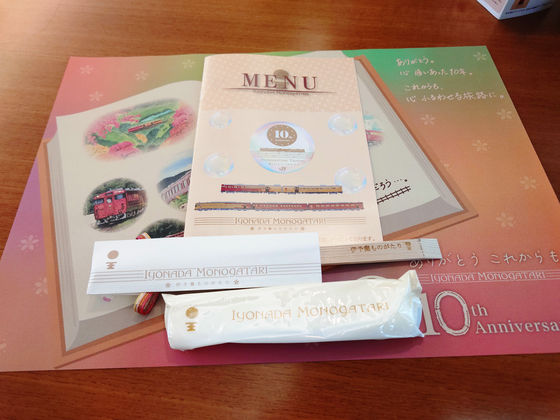
Instead, I ordered the 'Chef Ushikawa's Three-item Colorful Plate' (800 yen including tax).
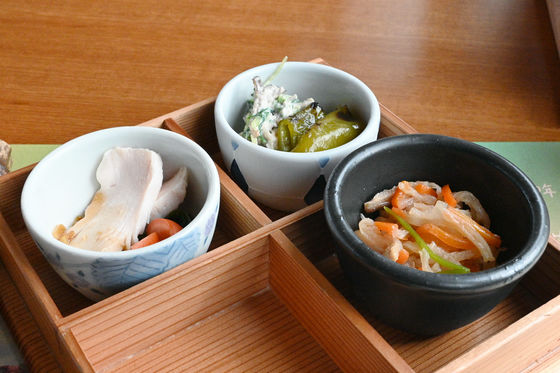
If that sounds like you, you'll want this too... so I decided to buy the 'Local Sake Tasting Set' (1,200 yen including tax). You can choose three of the six types, in order of spiciness: Dogo's 'Okarakuchi', Hojo's 'Yukijaku', Imabari's 'Yamatan Masamune', Ikata-cho's 'Miya no Mai', Kawanoe's 'Umenishiki', and Tobe-cho's 'Hatsuyuki Sakazuki'.
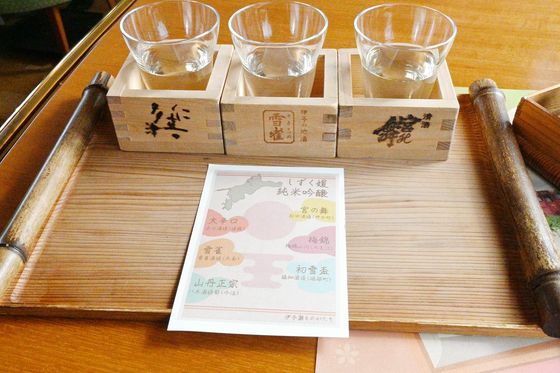
While I was getting a little comfortable, the train left Matsuyama Station, passed Mukaihara Station, and left the tracks around the Uchiko Line. The Matsuyama Expressway was straddling the tracks around the Uchiko Line high above.
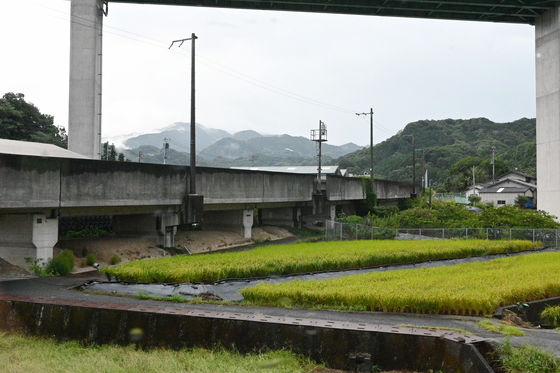
As the 'Iyonada Monogatari' train runs, people wave at the train in various places. There are announcements on the train about where the people are waving, so you won't miss them. People on the train also actively wave back.
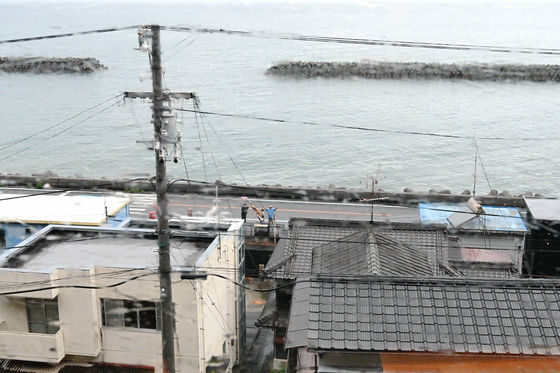
The train makes a long stop at Shimonada Station along the way.
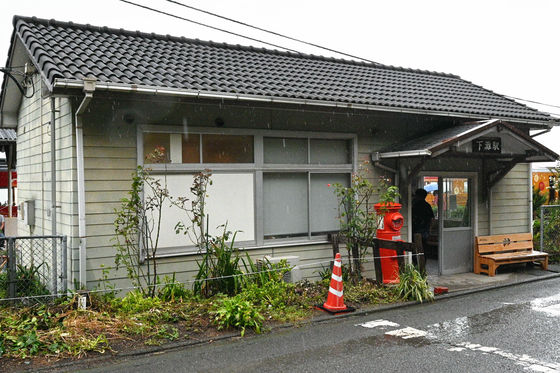
If it had been a sunny day, the red and yellow 'Iyonada Monogatari' would have stood out against the blue Iyonada Sea, but unfortunately it was raining that day. This became a strong memory in its own way.
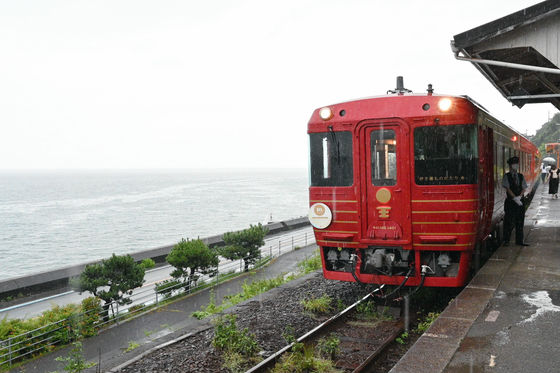
I also ordered a set of Mango Lovekan and hot coffee (1,000 yen including tax) and enjoyed my trip to Iyo-Ozu.
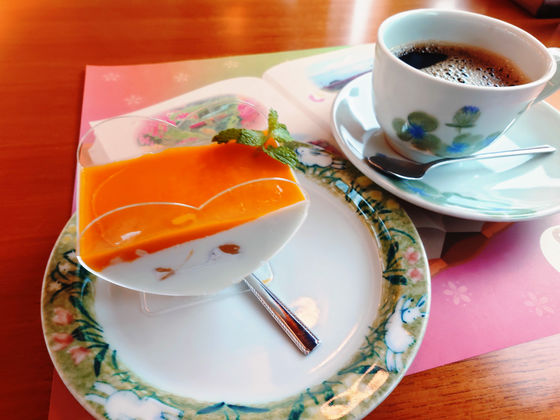
By the way, 'Lovekan' is a heart-shaped sweet made with mandarin oranges and other fruits that was introduced in 2017, and the mango flavor is a new product to be released in 2024.
A student's recipe has been adopted for the new sweets on the tourist train 'Iyonada Monogatari'!! | Kawahara Foreign Language Tourism and Confectionery College
The Iyonada Monogatari arrived at Iyo Ozu at 10:28. Speaking of Ozu, there is Ozu Castle with its wooden restored castle tower, but it is a 30-minute walk or 10-minute taxi ride from the station. I couldn't make it in time for the next train. So I gave up on sightseeing.
Ozu Castle Official Website | Ozu City, Ehime Prefecture -
https://ozucastle.jp/
I managed to get hold of some ' Suigyo Ozu Shigure ' at a shop outside the station. It's a Japanese sweet made with sweet bean paste, which is slightly different from yokan and moiro.
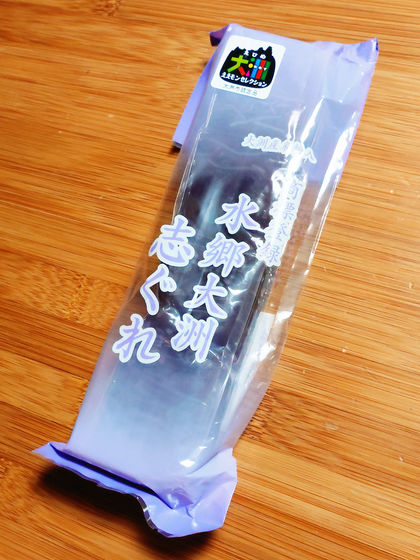
◆Limited Express Uwakai No. 9, Iyo-Ozu → Uwajima
From Iyo-Ozu, I boarded the Limited Express Uwakai No. 9, which departed at 10:52. It was still raining. At the platform just beyond the overpass, the 'Iyonada Monogatari Futami Hen' train, which was heading back to Matsuyama, was leaving at 10:57. I was waiting for the departure.
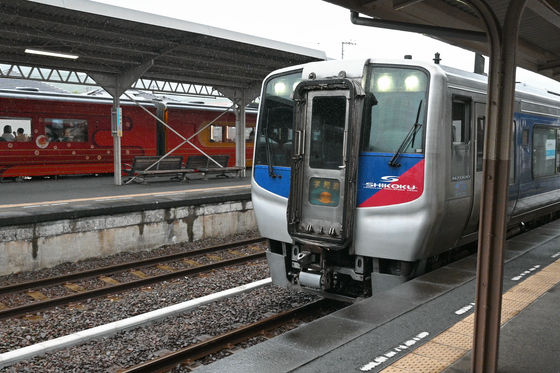
In moderate rain, it took 48 minutes from Iyo-Ozu and we arrived in Uwajima at 11:40.
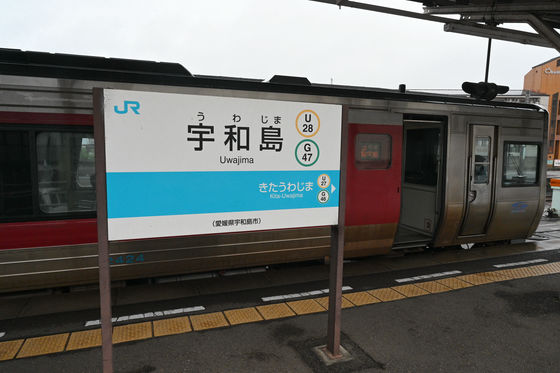
◆Uwajima Bus Uwajima Station → Sukumo Station
Timetable for Uwajima Station. I was originally scheduled to transfer to the Yodo Line bound for Kubokawa at 12:18, about 40 minutes later.
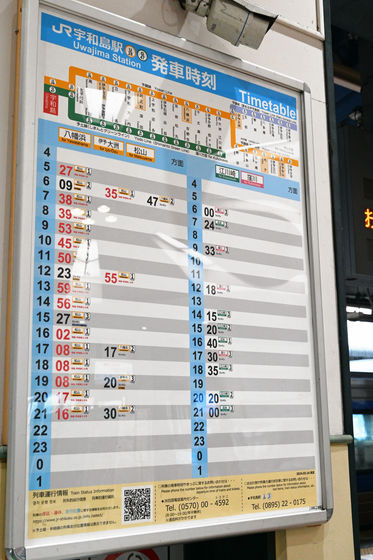
However, on this day, September 22, 2024
Notice of suspension of Yodo Line operation at Uwajima Station on September 22, 2024 - YouTube
I knew that the Yodo Line had not been running since the morning, so I had already considered an alternative route while I was on the move. The first thing that came to mind was to make full use of the 'Shikoku Green Travel Guide' and leave Uwajima at 11:50. Return to Matsuyama on the Uwakai 14, then take the Shiokaze 20 departing 7 minutes later to Tadotsu. From there, take the Dosan Line Limited Express Nanpu 15 down to Kochi, then take the Ashizuri 14 departing Kochi at 7pm. The route was to take the Nakamura Express and then a local train to arrive at Sukumo at 21:36, but this would take too much time. Above all, it would be too long to return to Tadotsu on the same route I took today. It's too spicy too.
However, thankfully, there is a line called the Uwajima Bus Jobe-Sukumo Line that connects Uwajima and Sukumo in two hours, so although it requires an additional fare in addition to the 'Shikoku Green Travel' fare, you can make use of it. Since it is a long-distance bus, the 10th installment of the famous 'Local Route Bus Transfer Journey' - Around Shikoku , and the 5th installment of 'Local Route Bus Transfer Journey Z' - Around Shikoku It is also used for touring the entire castle .
The map in 'Shikoku Green Travelogue' looks like this. The red line is the Yodo Line, which is currently out of service, and the blue line is the Uwajima Bus Jobe and Sukumo Lines.
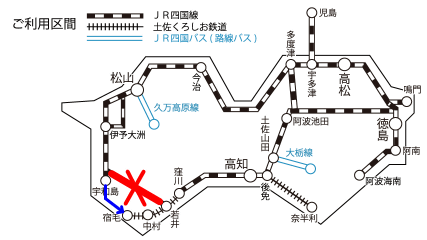
The bus runs about once every hour and a half, and I could have taken the 12:20 Uwajima bus, but even if I arrived early, I would have been late for the hotel check-in time. We decided to take the next bus and have lunch in Uwajima.
The water in the canal in front of Uwajima Station is muddy due to the rain.
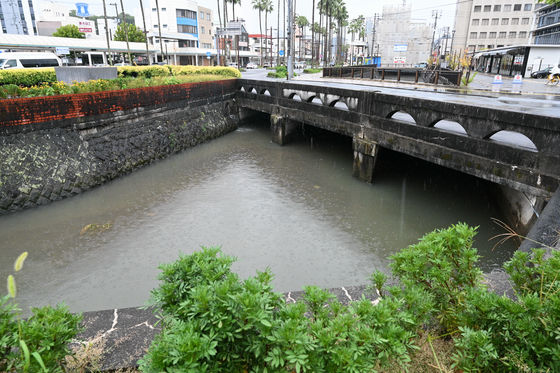
Since I was there, I decided to try Uwajima's local dish,
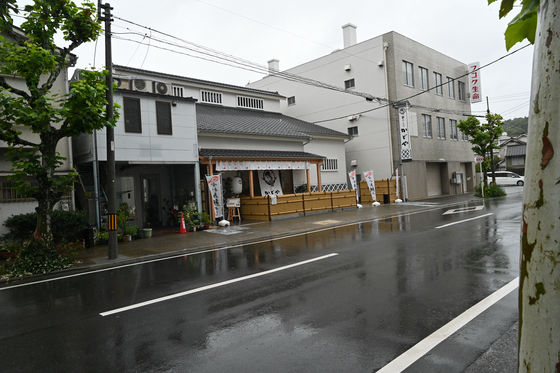
There are three types of sea bream appetizers, so I chose the 'Uwajima Colorful Sea Bream Meal' (2,800 yen including tax).
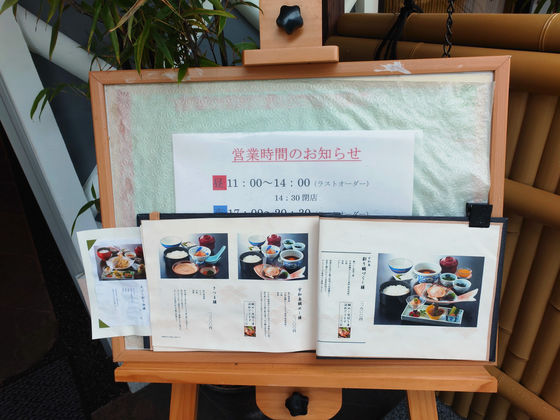
It took about 10 minutes from when I entered the restaurant to when my order was brought out. Because I decided to take the next bus, I was able to eat at my leisure, even with the portion size, without feeling rushed.
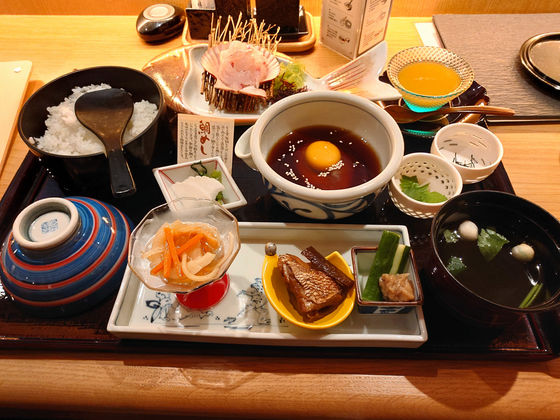
This dish of sea bream sashimi topped with egg and dashi broth is sure to be delicious. You can also have seconds of rice.
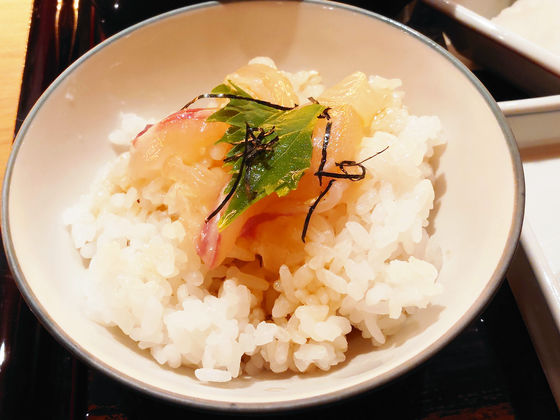
The next train from Uwajima was at 12:20, but we still had time to spare after eating, so we decided to go to
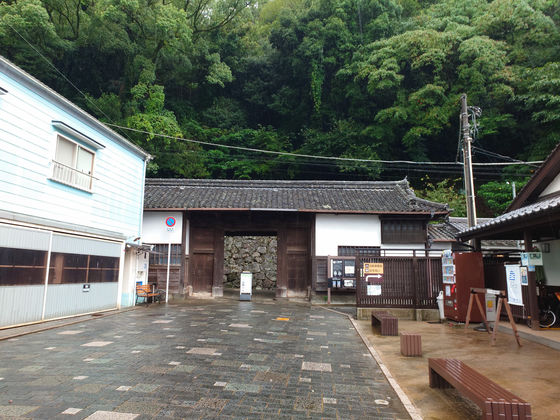
If you pass through Idomaru and climb the steep stone steps, the castle tower will come into view in just under 10 minutes.
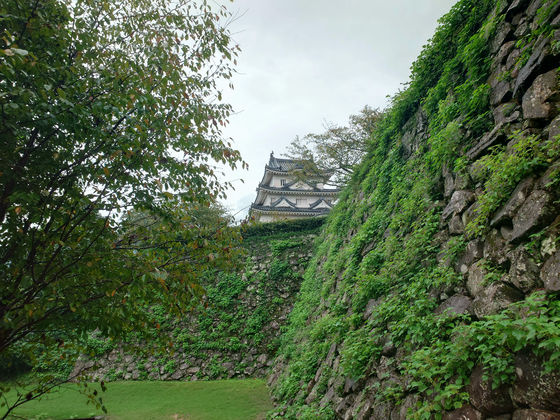
View from the castle tower towards Uwajima Station.
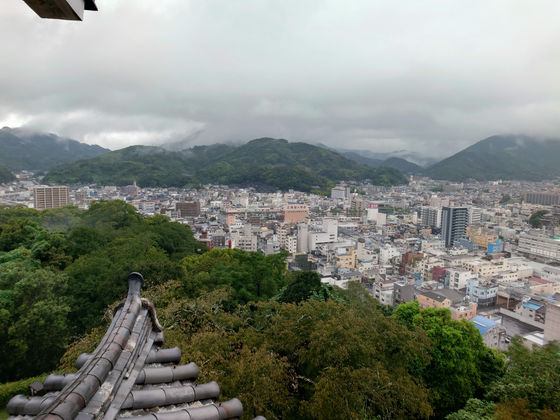
Once you get off at the castle, it takes about 30 minutes for the bus to depart. You can also board the bus from the Uwajima Bus Center near Shiroyama, but I wasn't sure how crowded it would be, so I went back to the starting point, Uwajima Station. In addition to Sukumo, there are also flights to Matsuyama.
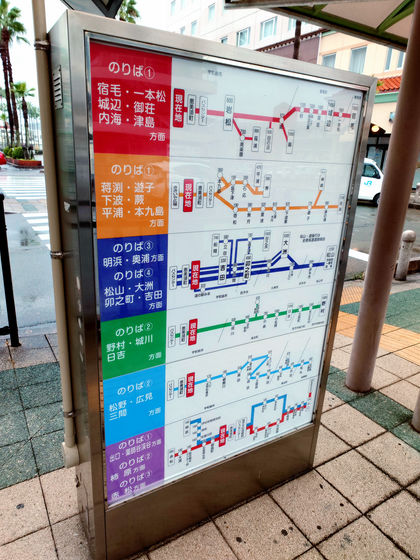
Bus departure information display. The bus bound for Matsuyama and Dogo is an express train, but the bus bound for Gusukube and Sukumo is a local train, with over 80 stops.
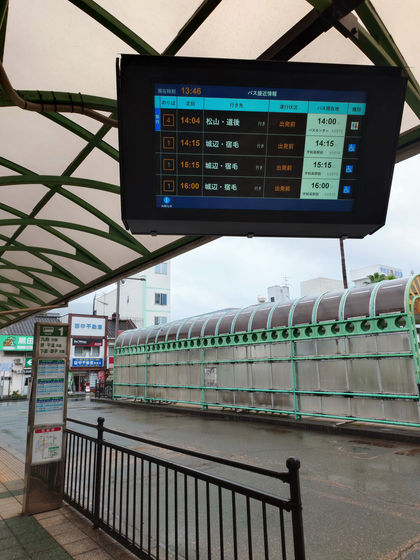
After climbing the mountain, we replenished our sugar levels with '
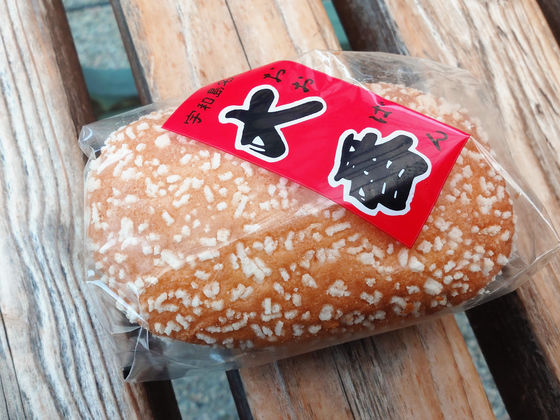
The bus bound for Sukumo arrived. This was definitely a local bus.
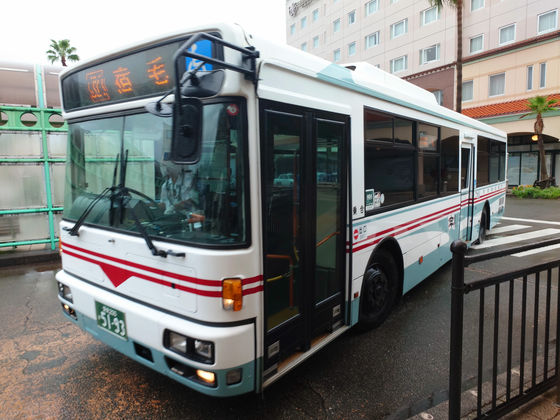
We continued on, gazing out the window at the clearly swollen river. As we left the city of Uwajima, the rain stopped.
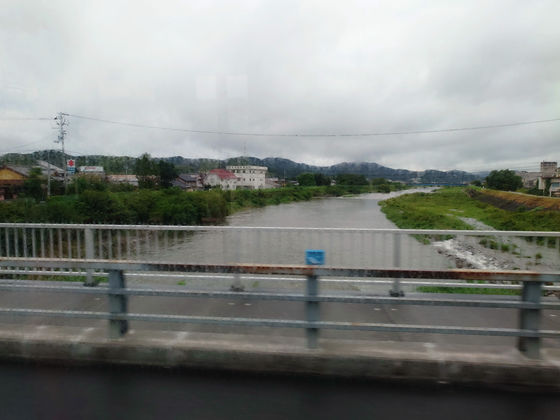
If you cross the bridge from Ainan Town, Minamiuwa District, Ehime Prefecture, you will come to a bus stop called 'Kenkai' in Sukumo City, Kochi Prefecture.
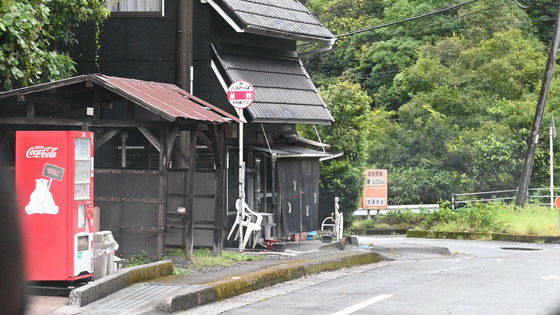
'Welcome to Kochi' can be seen as you cross the prefectural border.
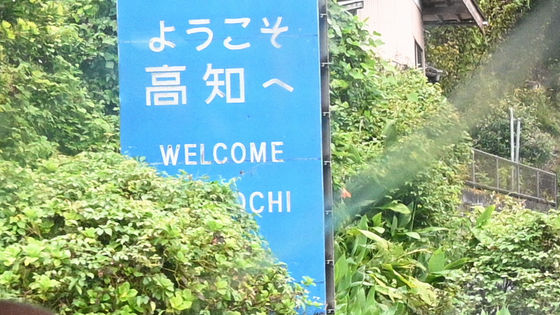
After two hours on the train, the sign finally says 'Next Station: Sukumo.' The fare from Uwajima Station is 1,850 yen.
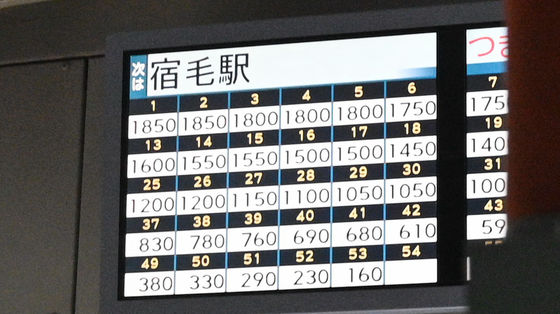
◆Arrival at Sukumo, the destination for the first day
We arrived at Sukumo Station. The bus's final stop is the Sukumo Depot, a little further ahead.
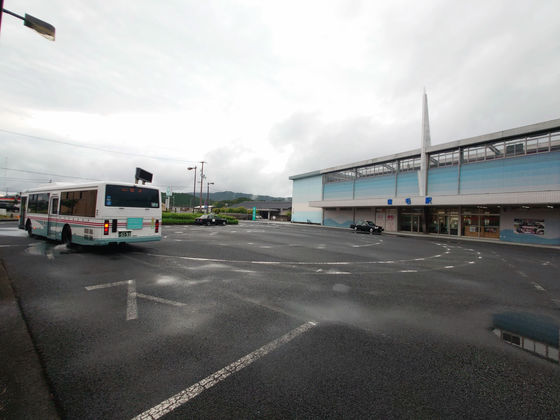
Just then, the Tosa Kuroshio Railway bound for Kubokawa departed. Since I wasn't using any public transport today, it wasn't a problem.

The Sukumo Station building housed souvenir shops, barber shops, and other businesses.
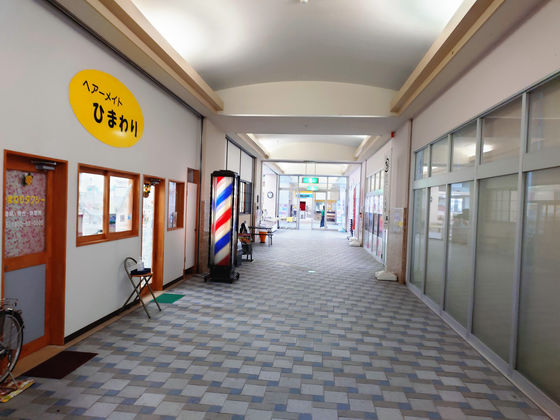
Trains run approximately once every 1 to 2 hours, and you can go directly to Takamatsu by taking the Shimanto No. 8 Express, which departs at 18:24.
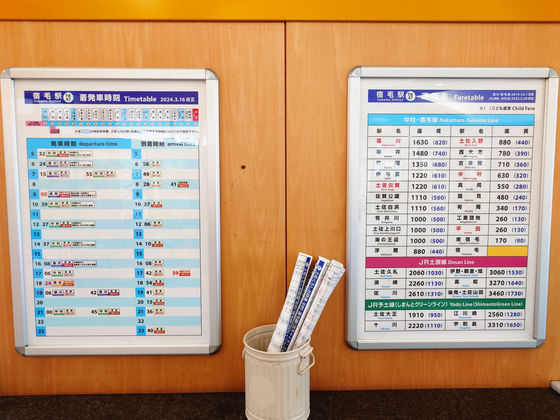
Here is a distant view of Sukumo Station. It is a magnificent elevated station.
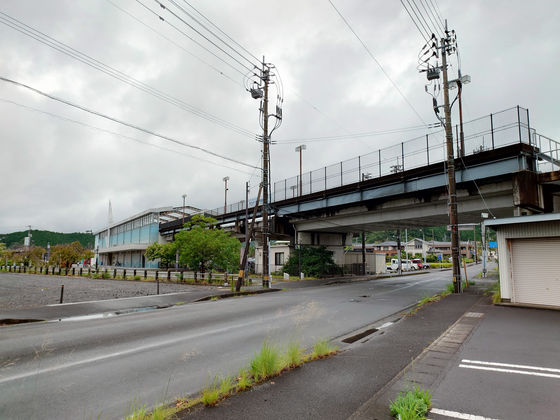
Hotel Avan Sukumo, which can be seen on the right hand side along the elevated road with blue letters on a white background, is where we are staying for the day.
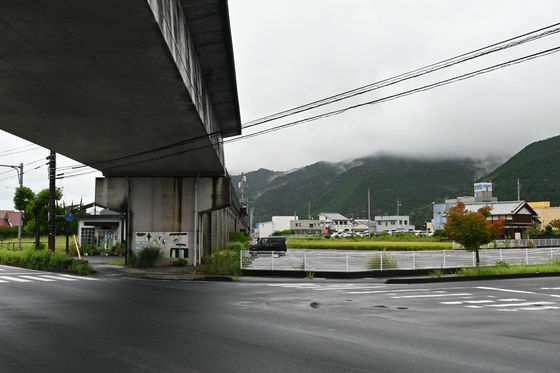
We decided to take a rest and prepare for the journey tomorrow.
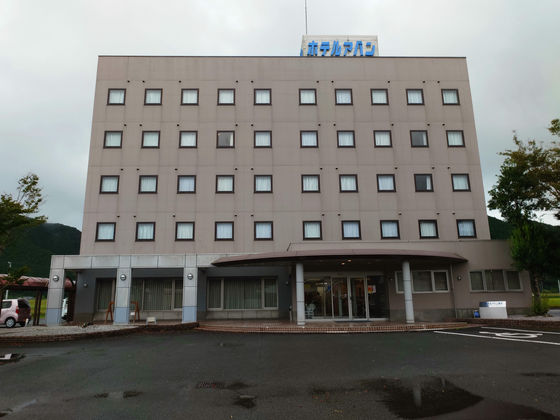
The results of the first day were as follows: I traveled from Takamatsu to Matsuyama to Iyo-Ozu to Uwajima to Sukumo, taking two express trains, one sightseeing train, and one bus. The red lines are the train journeys, and the blue lines are the bus journeys.
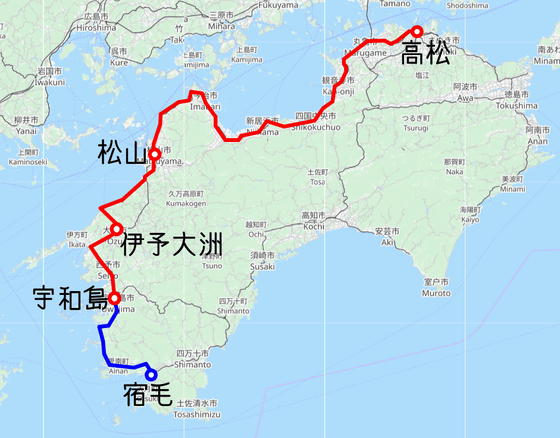
Continued

Related Posts:


